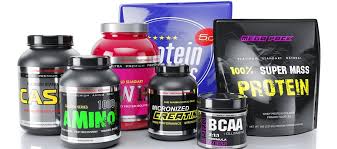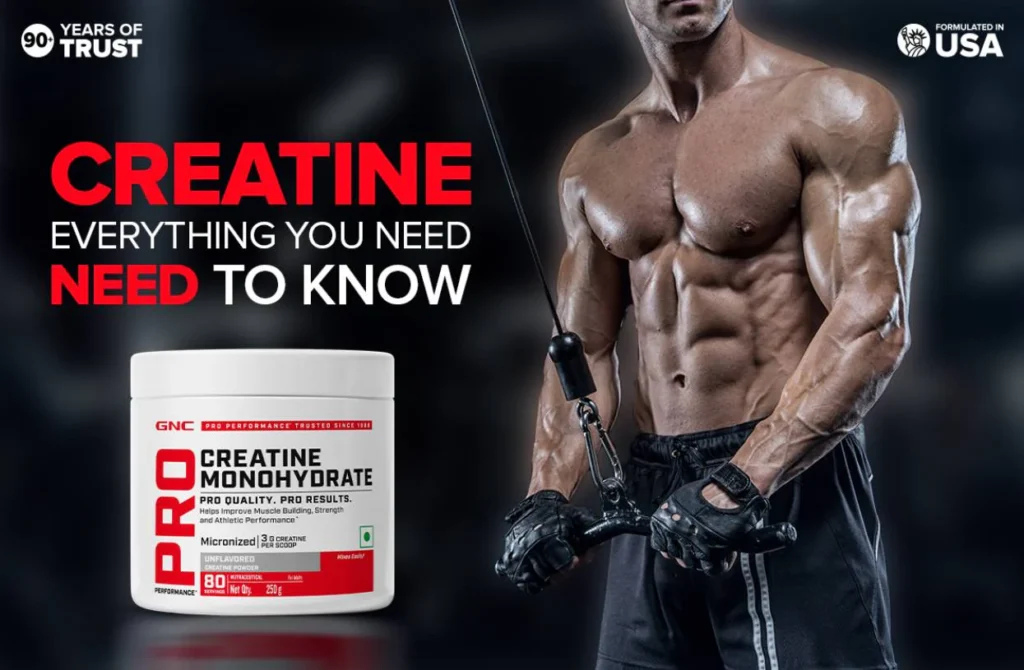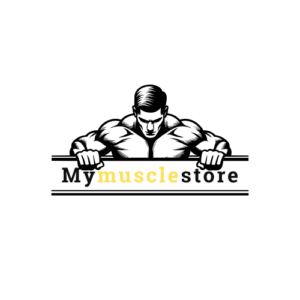
To find reliable information on supplements, you can visit the National Institutes of Health (NIH) Dietary Supplement Fact Sheets for factual data, or check blogs from health organizations like WebMD and Healthline for consumer-focused articles on specific supplements such as Vitamin D, probiotics, and fish oil. Websites like Informed Sport also offer research-backed information on popular ingredients like creatine and caffeine.
Reliable Sources for Supplement Information:
- Government Health Organizations:
- National Institutes of Health (NIH): The NIH’s Office of Dietary Supplements (ODS) provides consumer and professional fact sheets on a wide range of vitamins, minerals, herbs, and other supplements.
- Reputable Health and Wellness Sites:
- WebMD: offers articles and slideshows on the benefits, risks, and myths surrounding popular supplements like multivitamins and Vitamin D.
- Healthline: publishes articles on various natural supplements, including discussions on their potential effectiveness, such as Berberine.
- HelpGuide.org: provides an overview of dietary supplements, their benefits, and safety precautions.
{Examples of Supplements Discussed in Blogs:
- Vitamin D: Important for bone strength, but sun exposure is the best natural source.
- Probiotics: Beneficial for gut health, found in fermented foods and available as supplements.
- Fish Oil: Contains Omega-3 fatty acids that support heart health.
- Magnesium: Helps with regulating blood sugar and pressure, found in leafy greens and avocados.
- Creatine & Caffeine: Well-researched and effective for physical performance.
{ATOM Whey Protein

The ATOM blog highlights its whey protein as a high-quality, authentic supplement for muscle growth and recovery.
- Key features: Contains a blend of whey concentrate and isolate with a high concentration of BCAAs and essential amino acids (EAAs) to maximize muscle protein synthesis. It is also fortified with digestive enzymes to improve absorption.
- Benefits: Supports muscle recovery and growth, enhances athletic performance, and helps preserve muscle glycogen stores.
- Target audience: Suitable for bodybuilders, gym enthusiasts, and beginners looking to supplement their protein intake.
ATOM Plant Protein
For those with dietary restrictions, the ATOM blog promotes its plant protein as a vegan-friendly alternative to whey.
- Key features: A blend of pea and brown rice protein, which provides a complete amino acid profile similar to whey protein. It is dairy-free, soy-free, and fortified with a blend of enzymes and minerals for easy digestion.
- Benefits: Supports muscle building, aids in weight loss by promoting satiety, and enhances endurance.
- Target audience: Vegans, individuals with dairy allergies, and older adults looking for a convenient way to meet their daily protein needs.
ATOM Mass Gainer
ATOM offers a mass gainer specifically for individuals struggling to gain weight or bulk up.
- Key features: An energy-dense supplement with a 5:1 ratio of carbohydrates to protein, providing 315 calories, 12g of protein, and 60g of carbs per serving. It also contains a “power blend” with ingredients like BCAA, L-Glutamine, and Ashwagandha extract.
- Benefits: Boosts calorie intake, fuels intense workouts, helps build muscle mass, and improves recovery.
- Target audience: “Hard gainers” and those aiming for rapid muscle and weight gain.
Authenticity and manufacturing
The ATOM blog and official product pages emphasize the brand’s commitment to quality assurance.
- ATOM products are manufactured in GMP and FSSAI-certified facilities.
- The brand includes a two-step authentication check method on its products, allowing customers to verify authenticity.
Protein from whole foods vs. supplements
| Whole Foods | Supplements | |
|---|---|---|
| Pros | Complete nutrition: Whole foods offer a broader nutritional package, including fiber, vitamins, and minerals that support overall health. Long-term sustainability: Emphasizing whole foods promotes balanced eating habits for long-term health. Satisfaction: Chewing and digesting solid food can be more satisfying than drinking a shake. Cost-effective: For most people, sources like eggs and lentils are much cheaper per gram of protein than supplements. | Convenience: Shakes are quick, portable, and ideal for busy schedules or immediately after a workout. Targeted nutrition: Supplements are concentrated, allowing you to meet specific protein targets without excess carbohydrates or fats. Faster absorption: Whey protein is absorbed quickly, making it ideal for rapid muscle recovery. |
| Cons | Time-consuming: Preparing and cooking protein-rich meals takes more time than mixing a shake. May be insufficient for high needs: Meeting very high protein targets (e.g., for serious athletes) can be challenging with whole foods alone. | Less complete nutrition: They lack the vitamins, minerals, and other benefits found in whole foods. Potential contaminants: Some low-quality brands may contain heavy metals or other contaminants, so third-party certification is important. Cost: Quality supplements can be expensive. Not a miracle solution: Muscle growth and weight loss still depend on overall diet and exercise, not just supplementation. |
Common protein myths debunked
- Myth: Protein supplements are only for bodybuilders.
- Fact: Everyone needs protein for essential bodily functions, including immunity, hormone production, and cellular repair. Supplements can be useful for anyone who struggles to meet their daily protein needs, such as vegetarians or those with active lifestyles.
- Myth: Whey protein is unsafe or unnatural.
- Fact: Whey protein is a natural byproduct of cheesemaking from milk. High-quality supplements undergo filtration to remove contaminants, making them safe for healthy individuals.
- Myth: Protein damages your kidneys.
- Fact: Moderate protein intake does not harm healthy kidneys. The concern is only for individuals with pre-existing kidney conditions.
- Myth: Women will get bulky from protein powder.
- Fact: Due to hormonal differences, women lack the testosterone levels to “bulk up” from protein supplements like men do. Instead, protein supports muscle toning and recovery.
- Myth: You must consume protein within 30 minutes of a workout.
- Fact: While post-workout protein is important, the “anabolic window” is much longer than previously thought. Overall daily protein intake is more critical than precise timing.
Key considerations for choosing a supplement
If you’ve decided a supplement is right for you, consider these factors:
- Identify your goal:
- Muscle building: Opt for whey protein (isolate or concentrate) for fast-absorbing amino acids to support muscle repair post-workout.
- Weight management: Casein protein digests slowly, promoting satiety for longer. Look for low-sugar, high-protein formulas.
- Overnight recovery: Casein is also a good choice before bed for a slow release of amino acids.
- General health: A balanced protein blend or plant-based option works well to meet daily protein goals.
- Assess protein quality: Look for brands that clearly state the protein content per serving (ideally 20–25 grams) and have a comprehensive amino acid profile.
- Check for third-party testing: To ensure a clean and safe product free of heavy metals and other banned substances, choose supplements that are third-party certified by organizations like NSF Certified for Sport or Informed-Sport.
- Consider dietary restrictions:
- Dairy allergies/lactose intolerance: Opt for plant-based proteins (pea, soy, hemp) or whey protein isolate, which contains very little lactose.
- Vegan/vegetarian: Plant-based protein powders are derived from sources like peas, rice, and soy.
- Evaluate taste and mixability: Experiment with sample packs if available to find a flavor and texture you genuinely enjoy. This increases the likelihood that you’ll stick with it.
- Read the label: Scrutinize the ingredient list for unnecessary fillers, added sugars, or artificial sweeteners.
A blended approach for optimal protein intake
For most people, the ideal strategy involves a combination of both whole foods and supplements.
- Build your base with whole foods: Get the majority of your daily protein from nutrient-dense foods like eggs, lentils, chicken, fish, dairy, and beans.
- Use supplements to fill gaps: Incorporate protein shakes when you need a fast, convenient boost, such as after a workout or on a busy day.
- Hydrate adequately: Drinking enough water is crucial for proper protein digestion and helps prevent issues like bloating and constipation.
supplement creatine

Typical images of creatine products
- Powder: Most commonly, creatine is sold as an unflavored or flavored powder. Photos often feature a white powder in a scoop, on a spoon, or spilling out of a jar. It is frequently shown alongside other workout supplements like whey protein.
- Containers: Supplement containers come in various sizes, with branding from different companies. They often have a scoop inside for measuring doses.
- Capsules: Creatine is also available in capsule form for easy consumption. Stock photos show bottles of creatine capsules with some pills spread out for display
Before and after image characteristics
Most images claiming to show “before and after” results from creatine are not based on specific scientific studies and should be viewed with skepticism. Creatine’s effects are often subtle and depend heavily on consistent, high-intensity exercise and diet.
Images typically depict:
- Before: A person with a less defined physique, sometimes appearing thinner or less muscular.
- After: A person with a more muscular, fuller, or “pumped” appearance. These images are often taken under controlled lighting to maximize the effect.
- Muscle fullness: Creatine draws water into muscle cells, which can cause a temporary increase in weight and create a fuller, more defined look in the muscles. This is often the most immediate “before and after” visual change.
Scientific and anecdotal results
- Initial water retention: Within the first few weeks, a user may gain 2–5 pounds from water being drawn into the muscles.
- Muscle growth and strength: Over time, with consistent resistance training, creatine helps muscles produce more energy (ATP). This can lead to increased strength and lean muscle mass.
- Performance: Athletes may notice improved performance in short, high-intensity exercises like sprinting or weightlifting.
- Brain health: Some studies suggest creatine may improve brain function, though this is not a visually apparent change.
Is creatine safe?
Creatine is one of the most widely researched supplements and is generally considered safe for most healthy individuals when taken at recommended dosages.
Potential side effects and considerations include:
